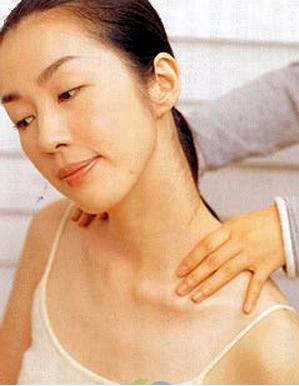Do you always experience pain in the neck and shoulders? Do you feel that your neck muscles contract involuntarily, meaning without you intending it? And this contraction causes your head to tilt all of a sudden? If so, there’s a good possibility that you are suffering from cervical dystonia. This is a rare disorder characterized by the involuntary contraction of the neck muscles resulting to abnormal movements and posture of the neck and head.
Cervical dystonia causes your head to turn to one side. It could also tilt sideways, to the front or to the back. You’ll notice that the turning movements are usually accompanied by jerky movements. This is called a tremor. Aside from these symptoms, you will also complain of pain and soreness of the neck and shoulder muscles.
Despite its name, cervical dystonia does not only happen to women. In fact, it can happen to both genders. Women, though, are the usual victims of this affliction. It can also occur in children, although adults aged 30 to 60 years old are the most commonly affected.
Symptoms
 The most common symptom of cervical dystonia is the involuntary contraction of the neck muscles. If the contractions are constant, it could result to the tilting or abnormal position of the head and neck. But in case the contractions are intermittent, the result patient will have jerky head movements instead.
The most common symptom of cervical dystonia is the involuntary contraction of the neck muscles. If the contractions are constant, it could result to the tilting or abnormal position of the head and neck. But in case the contractions are intermittent, the result patient will have jerky head movements instead.
Ordinarily, these contractions are painful. And the pain worsens when you are under stress. But the pain and contraction will go away once you have rested or slept. Sensory tricks like placing the hand on the back of the head can temporarily relieve the pain.
How does cervical dystonia begin? Generally, the contraction of the muscles will begin in the neck before spreading into the shoulders. The symptom will become stable in five years or so, before eventually getting worse.
Although cervical dystonia is not a life-threatening condition, it can make life difficult for you. You should stop driving since there is an increased risk of accidents especially when your head suddenly turns while in the middle of the road. It can also be tough to perform day-to-day activities like eating and brushing teeth. Of course, living with this condition can be quite embarrassing. It is not surprising many people with cervical dystonia like you have major anxiety issues.
Diagnosis and Treatment
There are no tests that can confirm diagnosis of this disorder. Doctors base their diagnosis on the information relayed by the patient. They also subject the individual to physical and neurological examination.
One of the more effective treatment for cervical dystonia is the injection of Botox. When injected to the affected muscles, Botox enters the nerve cells and prevents the production of the chemical called acetylcholine. When this happens, the pain will be momentarily relieved.
Aside from Botox, physical therapy especially one that is conducted by a specialist in neurological disorders can improve the range of motion of the neck and head. It can also help in reducing pain.
Share This